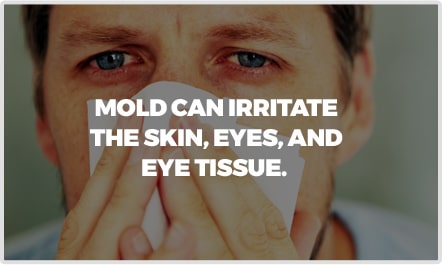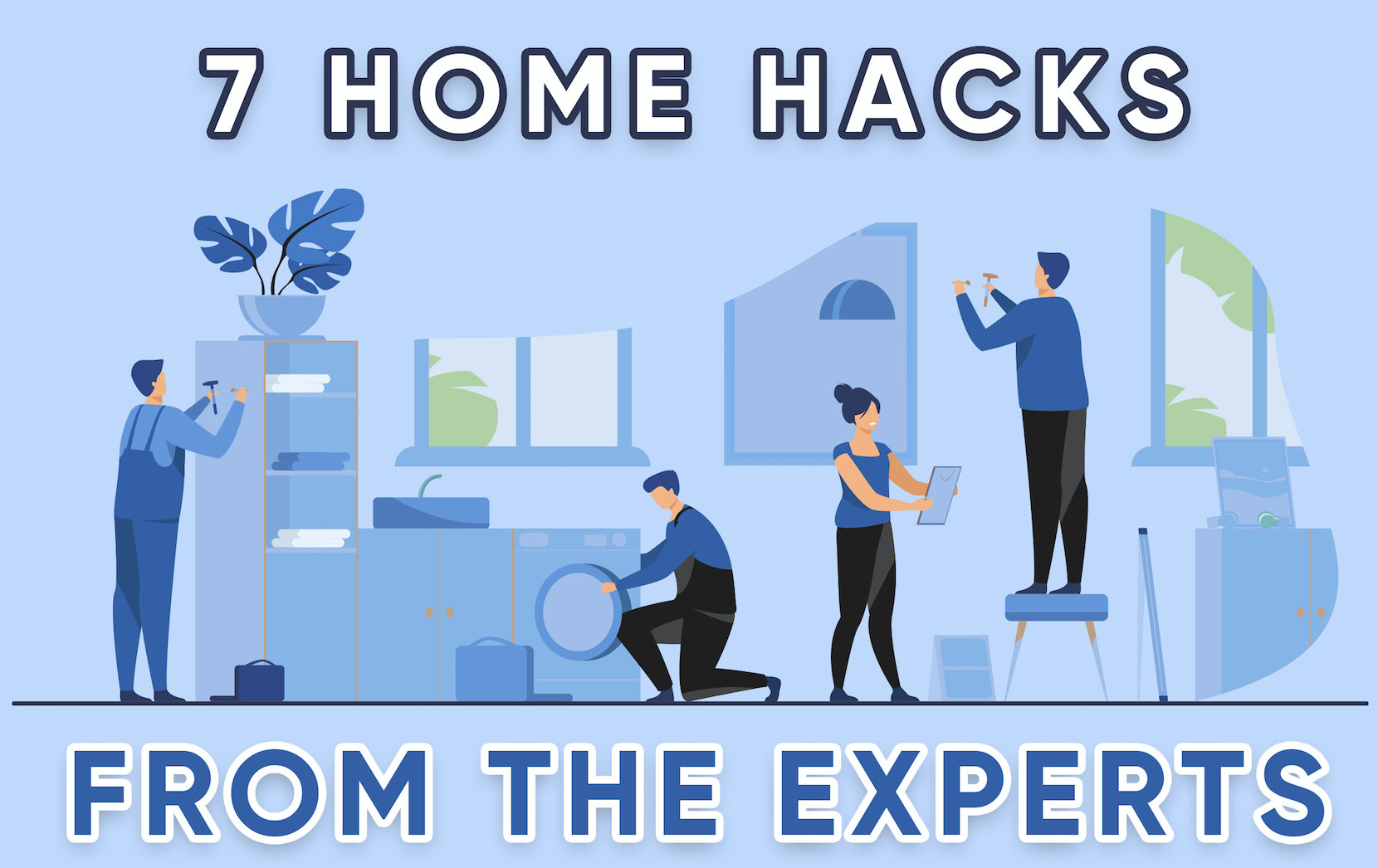Everything Property Owners Need to Know About Commercial Mold Removal and Remediation
Commercial mold restoration is a process that requires specific expertise and immediate attention. Mold damage can cause serious health complications in any environment, but especially in commercial buildings, where customers, clients, employees, and staff share the space. For this reason, it is especially important to have professional mold removal performed by a remediation company whenever mold growth is discovered. However, if you follow these steps and guidelines, you may be able to safely address it yourself.
The Phoenix area where we are based is prone to monsoon storms every summer. One year, after a particularly terrible series of storms, the entire Phoenix valley was subjected to major flash flooding. One of our large, high-profile commercial clients was directly in line of the flash floods and was hit hard.
Within minutes, the entire property was flooded, knocking out the power and even the backup generators. Underneath the property was a large 30-foot tunnel that extended along the length of the building, housing all of the electrical and plumbing materials, and this tunnel too completely filled with flood water, and the flowing debris broke pipes which contaminated the water with sewage.

More than 2 million gallons of water had soaked the property, and it took nearly a week to pump out all the water and clear the tunnel below the property. Which also meant; mold. Mold growth occurs within 24-48 hours when water or moisture remains in an area. So before we could even get all the water removed from this commercial property, mold was already beginning to grow and spread its spores. And if they entered the HVAC system, the growth would only spread from there.
The complicated situation required immediate remediation from a highly specialized team experienced in professional water damage and mold removal at a large-scale, commercial level. And timing was critical, as the faster we could get the standing water removed and start drying out the property, the more we could head off further mold growth. We performed an expertly strategized and thorough restoration of the entire property that resulted in a fully restored and safe environment for both employees and customers when the job was done.
In this article we will dive into the 10 critical steps of commercial mold restoration, what it entails, how it should be done, and why it is so important for health and safety reasons to do it right.
WHAT IS MOLD?
First, what is mold?
Mold is one of the oldest, earliest, and simplest forms of life on our planet. mold is old. It is one of the simplest and earliest forms of life.
It has existed here for hundreds of thousands of years and is everywhere in our everyday lives.

Mold is technically a member of the fungi kingdom, which also contains other organisms like mildew, mushrooms and yeast.
Mold is as common as pollen or dust, and just like dust or pollen, it is not really bothersome to humans except in larger amounts. The more of it that is around, the more irritating it becomes to humans.
In fact, Gailen Marshall, who is the director of the Division of Allergy and Clinical Immunology at the University of Texas Medical School, said, “Mold is everywhere. For most, mold is a mostly ignored part of their lives.”
Mold grows and spreads when it releases its spores into the air, similar to the way a plant spreads its seeds in order to reproduce. When many spores congregate or accumulate in one specific area, and they get inhaled, they can trigger asthma symptoms or an allergic reaction.
In extreme cases, they can cause even more serious respiratory conditions and illnesses. In some cases, mold spores have been known to irritate the skin, eyes, and eye tissue.

In order for these health reactions to occur, there must be lots of mold spores present.
Harriet Burge served on a committee that conducted mold reviews for the CDC. She asserts, “Mold only becomes a health issue when there is too much of it.”
There is some debate about what constitutes “too much of it,” but most scientists agree that the threshold is different for each person and mold spores affect every respiratory and immune system differently. Obviously, if you are person with a weakened or compromised immune system, you will probably be more sensitive to the adverse effects of accumulated mold spores.
There are about twelve mold species (including the black mold species, Stachybotrys) that secrete mycotoxins which can be deadly to animals that eat them in large quantities, but most scientists agree that toxins from mold are not readily airborne—meaning that the toxins can’t spread like spores and have to be ingested to be harmful or toxic.

So it’s not the toxins that are dangerous. It’s just the respiratory irritation and inflammation cause by the spores that can have negative health consequences for people.
There is a strong link between mold and respiratory illnesses, like worsening asthma. Doctors at the Mayo Clinic in Rochester, MN, also figured out that that molds may be responsible for the majority of sinus infections in the U.S. And it should be noted that a connection between mold and more serious neurological problems has not been definitively ruled out.
As we said, in addition to respiratory complications, spores can also create skin and eye irritation. Many times these are actually the first indications that there is a mold problem.
Scientists and health professional advise cleaning up mold as soon as it is discovered. This will eliminate the possible chance for irritation or additional health complications for anyone who visits or works on your commercial property.
MOLD GROWTH 101
As we explained, molds thrive on moisture. It thrives in damp, humid, and wet conditions.
Mold will not continue growing or take over a property unless there is a continuous source of water. Removing the moisture content from a property effectively prevents the mold from growing and spreading.

Therefore, if you can’t seem to stop the spread of mold on your commercial property, keep this principle in mind. There is a moisture source that you need to identify and remove, even if you can’t readily see it.
Even when mold grows in places that you can’t easily detect—under building materials, under the floor, or behind drywall, for example, there are lots of clues that you have a mold problem if you are on the lookout.
For example, if you notice a musty smell when
you enter your business or commercial property,
there is likely to be an abundance of mold
somewhere.
This means that somewhere on your property there is excess moisture or water that is allowing building materials to remain wet.

As a business owner, if you suspect or smell mold growth, it is important to check for possible plumbing leaks or flooding, poor ventilation, or seeping ground water through the foundation. Have your roof inspected and check the seals around doors and windows, as well as all the flashings around vents or air conditioner equipment for possible leaks that allow moisture into your property.
It’s important before you start your commercial mold remediation project, to find the actual source of the mold problem so that you can stop the growth and prevent any future reoccurrence. Remediation won’t be effective if you still have a water source creating moisture in the building.
In one case, an office manager noticed a musty smell in their office but could not find any evidence of water or water damage. When we ran our air quality equipment and took readings of the atmosphere in the office. It showed readings with mold spore counts tens of thousands of units above normal.
There was mold growing somewhere in that building.
We used moisture reading equipment to investigate further. It was discovered that the air conditioner units had been slowly leaking for months, and maybe even years, allowing water to accumulate under the carpets and carpet padding. The company now had a significant mold problem underneath the carpet throughout the entire office.

Once we correctly identified the source of the continuous moisture, we could go to work remediating the mold. The air conditioning units were completely repaired and reinsulated and checked repeatedly for any leaks.
After this was completed, the remainder of the job could then proceed, including the complete disinfection and removal and proper disposal of all of the contaminated flooring.
We then eradicated the mold and ran tests to ensure that all traces of mold had been removed from the office.
GOT MOLD? NOW WHAT?
If you discover you have a mold problem at your commercial property, one of the most important things to do is to act quickly.
Mold not only releases mold spores into the air causing health complications, but it can also actually damage the surface it is growing on.
Obviously, the longer it is left untreated, the more damage occurs.

Mold will negatively affect the air quality inside your commercial property. Having good indoor air quality is necessary for your employees and your customers. an important component of good health. If you have a suspected mold problem, don’t ignore the problem. It won’t get better on its own.
 As we stated earlier, the first steps include identifying the water source and drying things out. You cannot take care of a mold problem permanently if you there is still moisture in the area.
As we stated earlier, the first steps include identifying the water source and drying things out. You cannot take care of a mold problem permanently if you there is still moisture in the area.
Remove any building materials with mold growing on them and dispose of properly. You will probably need to hire someone to do this who has proper equipment and is familiar with dealing with and disposing of hazardous material.
Putting unsalvageable items in thick plastic bags will reduce the spread of mold spores.
You also want to make sure the area is properly ventilated when you start removing materials. You don’t want to disturb mold spores any more than you have to in your clean up process and have them travel inadvertently to other parts of your commercial space.
Make sure you are wearing proper protection—clothing, masks, and protective eye goggles—throughout the process. Avoid breathing the mold spores into your lungs, by wearing a respirator. You’ll want an N-95 respirator, equipped with removable cartridges that trap mold spores from entering your airway.
Also, be sure to wear gloves and don’t touch moldy surfaces with your bare hands.
When mold remediation specialist do a job, they put on protective suits to cover their clothes and skin. This reduces the chance of irritation and the likelihood of transferring mold spores off-site or to other areas of the property.
 The next step is to figure out how big the mold problem is and how far it has spread because this will help determine who should do the mold cleanup.
The next step is to figure out how big the mold problem is and how far it has spread because this will help determine who should do the mold cleanup.
According to the EPA, if the mold growth is limited to an area less than 10 square feet (like a 3 ft. x 3 ft. patch of mold), then you can do the job yourself.
However, if the mold infestation is bigger than that, the EPA recommends that you hire a professional mold remediation expert with experience and knowledge to handle the cleanup.
Additionally, if the mold spores have traveled and mold has contaminated the heating/ventilation/air conditioning system you will also need to call a professional to eradicate the mold before you run the HVAC system again. Be advised that starting the HVAC system before a complete, professional, and thorough cleaning and disinfection is performed, will lead to the possibility of having mold spread the entire building.
Of course, whenever the mold damage was caused by sewage or contaminated water, like we found this past summer, a professional mold re mediator with the right tools and expertise in containment and safety is required to address and perform the cleanup. This can be a very dangerous situation. Hire a company with extensive professional experience in dealing with hazardous materials.
 Mold is hardy and knows how to survive. You or your remediation team will need to clean the affected area thoroughly.
Mold is hardy and knows how to survive. You or your remediation team will need to clean the affected area thoroughly.
Mold can survive and thrive in any environment where the pH levels are between 3 and 7, so you it will need to be scrubbed with a chemical that is either more basic or more acidic than these levels.
Thoroughness is important.
If you miss even a small spot, you can have regrowth occur. You need to ensure that all the mold has been properly cleaned and removed.
 When commercial owners try to clean up mold by themselves, one of the common mistakes they make is failing to set up a containment area when they are scrubbing.
When commercial owners try to clean up mold by themselves, one of the common mistakes they make is failing to set up a containment area when they are scrubbing.
Once you start cleaning or wiping the
mold, the spores will become airborne.
Then they easily move and contaminate
other parts of your office.
This is another reason why calling a professional mold remediation specialist is so valuable. When mold removal experts disinfect an area with mold growth, they set up negative air flow environments with carefully constructed containment areas to ensure the mold spores cannot spread.
 Once an area is properly cleaned, you will want to monitor it and run tests to make sure that all the mold is gone and will not regrow.
Once an area is properly cleaned, you will want to monitor it and run tests to make sure that all the mold is gone and will not regrow.
Before you do any reconstruction and start putting things back, you will want to make sure you have truly taken care of the problem.
MOLD REMEDIATION SPECIALISTS
It may be helpful to understand how mold is removed by mold remediation specialists. Many of the steps we have already discussed are the same, but they involve more equipment, better tools and disinfection materials, safer disposal and hazardous material handling, and contamination protocols. All of these allow the process to be both efficient and safe.

A typical commercial mold remediation job would involve the following methods and techniques:
1
First, we identify and dry the moisture source completely with efficient, industrial equipment and specialized tools. Large fans and set up to speed the drying process.
2
The work area is completely sealed off and containment is set up with plastic sheeting to prevent the spread of spores to other areas of the property.
3
We run HEPA (High Efficiency Particulate Air) vacuums and air scrubbers around the clock to clean the air of any airborne mold spores and prevent unintended transfer or contamination. It’s important to understand that only HEPA filters are designed to capture particles as small as mold spores. Regular filters will not work and can actually exacerbate the problem.
4
The affected area is then completely sanitized with industrial-strength disinfectants and antimicrobial chemicals. As we clean, we are simultaneously running the HEPA air scrubbers and air exchangers to replace the moldy air with clean fresh air.
5
If any porous building materials (like drywall or wood) cannot be thoroughly sanitized and salvaged, they are correctly disposed of and replaced. We follow the industry standard of removing all dry wall that is two feet from the appearance of mold.
6
After the affected drywall has been disposed of, we check inside the wall, looking for insulation or wood that has evidence of mold growth. Any materials with growth are removed or sanded down as necessary.
7
After mold removal and cleaning has been completed, we put the HEPA air scrubbers back to work for another 24 hours to ensure the air is free from any remaining mold spores.
8
The entire area is then treated and sealed with antimicrobial chemicals to completely eliminate any possible future mold growth.
9
Then the reconstruction and restoration part of the project can begin, returning the commercial space to its normal appearance.
9
Then the reconstruction and restoration part of the project can begin, returning the commercial space to its normal appearance.
10
After the work has been completed, we also schedule rechecks at regular intervals to ensure that no new growth has occurred and all mold and spores have been completely eradicated from the property. We do every commercial mold remediation work according to the highest safety and industry standards to prevent any subsequent outbreaks.
WHY MOLD REMEDIATION MATTERS
As a business owner, your most important priorities are your employees and your customers.
You want your commercial property to reflect those priorities and to be an environment that is clean, safe, and beautiful. In this way, your property is a reflection of your care and your commitment.

When you have mold because of water damage, it can lead to unsightly appearances, poor air quality, and musty smells. The faster you can have the mold removed and the area cleaned and remediated, the better.
Not only that, but while mold growth on your property may be unsightly and smelly, it also causes other problems. By definition, actively-growing mold destroys the material it is growing on, and can do actual structural damage to your building or property.
We have also talked about the negative health consequences that mold has on respiratory systems and irritation to eyes and skin. There is some anecdotal evidence of neurological consequences as well.
All mold growth in homes, schools, and commercial properties should be eliminated as soon as possible before it impacts human health, the structural integrity of the buildings, quality of life for you and your employees, as well your ability to conduct your business the way you want to.
In one case in Finland, there was a small military hospital that experienced extensive and repeated water damage.
All the visible water damage was repaired, but
the mold was not properly remediated and it
grew, hidden behind the repaired walls for
many years.

This wide-spread mold growth was not discovered until many years later when the building was being updated and renovated.
The mold growth had gone on undetected, but before the renovation began, all of the fourteen hospital employees had developed respiratory health illnesses related to mold, when all of them had previously been healthy and had no respiratory conditions whatsoever.
Of the fourteen, four of them developed occupational asthma. Some had inflamed sinuses, regular fevers, laryngitis, and muscle aches.
One of the employees suffering from asthma also became infected with pneumonia.
It was reported that “he had a series of respiratory issues, fevers, and infections which recurred whenever he was assigned to work in this building but improved whenever he was transferred elsewhere.”

Additionally, most of the workers had a persistent cough and half of them had a runny nose.
Remember also, that all of this occurred in a hospital setting. It would be difficult to heal and treat patients while they were also being exposed to mold spores.
It’s clear that if you are someone who owns commercial property, it is important that your employees and customers be able to work and do business in a safe and healthy space.
TITAN RESTORATION OF ARIZONA
While mold has been a part of earth’s history since the beginning, concentrated amounts of mold spores do not belong in your commercial business. Always be on the lookout for water damage that may lead to mold growth or for the tell-tale signs of mold growth.
By being vigilant about keeping your property free of mold, you will reduce the risk of possible respiratory illnesses and help you, your employees, and your customers to all breathe a little easier.

While it may be possible to clean up very small mold growth by yourself, because of the high risk of mold spores spreading to other areas of your property, it is recommended that you seek professional help when dealing with a mold problem at your business.
You want to make sure the job is done right and the damage is minimized as much as possible.
Especially in cases where the mold is hidden or the area affected is larger than 10 square feet, the job should be left to a professional mold remediation expert.
But regardless of how big or extensive the scope of the mold problem is, the knowledge and experience of a reputable mold remediation contractor can be invaluable.
At Titan Restoration of Arizona, we have been addressing mold infestations and eradicating them from homes and businesses in the Phoenix valley for over 20 years.
We know exactly what needs to happen to remove the mold on your property and we have the equipment and expert technicians to do it.

You won’t find another mold remediation company with our proven track record and excellent level of service and efficiency. We will give you the results you need to give you peace and mind and get you back to business as soon as possible.
Titan Restoration of Arizona is the mold remediation specialist you can trust with your commercial property.
Or – Give us a call: 480-649-5050










